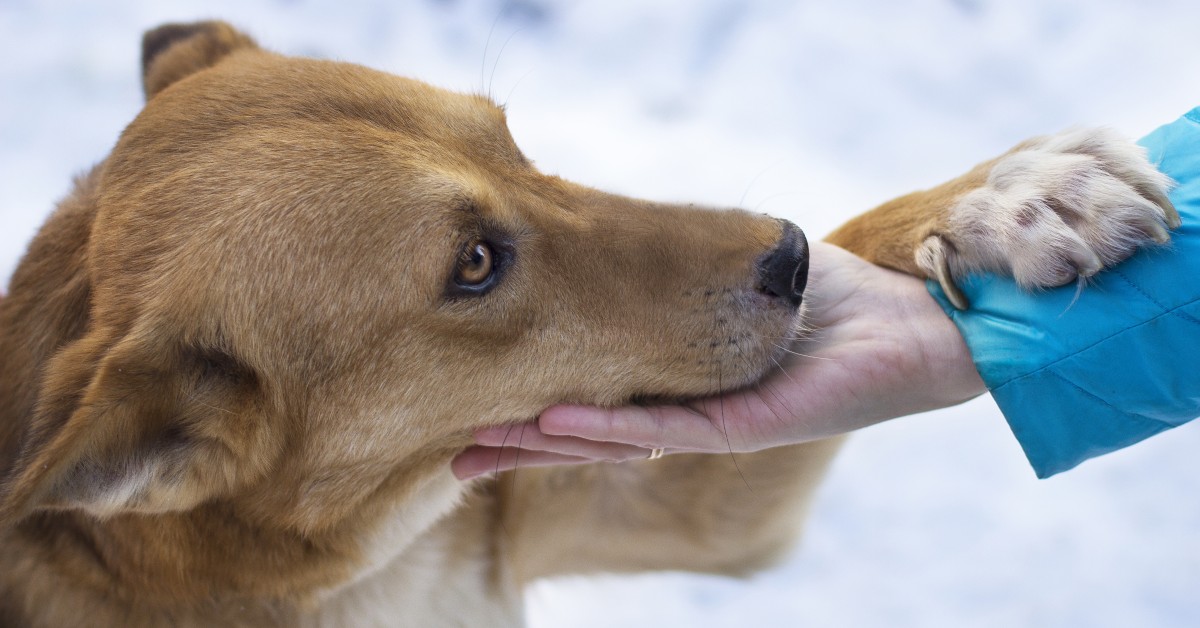How Hot Is Too Hot for Pets? Signs of Overheating
High temperatures can put your pet at risk for heat-related conditions, such as heat exhaustion and heat stroke.

While your pet may enjoy basking in the warm sun, too much of a good thing can be dangerous. When summer temperatures get brutally hot, your pet’s risk of overheating can significantly increase. But how hot is too hot? Let’s look at what temperatures are considered risky for pets and common signs of overheating in cats and dogs.
What Temperatures Are Considered Dangerous for Pets?
Like humans, all dogs have different tolerances to heat. The age and size of the dog play a factor, as well as the amount and length of hair. Generally, temperatures of 90 degrees Fahrenheit or higher are considered dangerous for pets and should be limited to 20 minutes or less at a time.
When temperatures range between 80- and 90-degrees Fahrenheit, pets can become hot and uncomfortable, but there is still a serious risk of overheating. When the temperature falls within this range, try not to keep your pet outdoors too long. Also, keep a lookout for the early signs of heat-related conditions, such as heat exhaustion and heat stroke.
What are the Signs of Overheating in Dogs and Cats?
The signs of overheating in pets can be subtle at first, and you may not even realize that your cat or dog is in distress. The condition generally begins with panting. Dogs naturally pant as a way to cool down their bodies. However, if you notice that your dog is panting excessively, even trying to catch its breath, then it could mean that your pet is too hot. Take the steps to help cool down your pet if it is constantly or heavily panting.
Next, look for excessive drooling. While a little drool can be normal, especially in some larger breeds, excessive drooling is a common sign of an overheated dog. You’ll also want to take a peek inside the animal’s mouth. If the gums or tongue appear unusually pale or bright red, it could be a sign of heat stress. In most dogs, healthy gums are pink.
Elevated body temperature is another common sign of overheating. Feel your pet’s body to see if they feel unusually warm. If you’re not sure, you can also take your pet’s temperature. For both cats and dogs, a lubricated tip of a thermometer should be slowly inserted into the rectum about 1 inch for small pets and 2 to 3 inches for larger pets.
Aside from temperature, an animal’s pulse and heartbeat can tell you a lot about their health. A rapid or irregular heartbeat is often a sign that something is amiss with your pet’s health. Due to the severity of these symptoms, it’s important to act fast. Contact your vet for guidance on how to proceed.
Several other signs could indicate that your cat or dog is overheating. This includes excessive thirst, weakness, stumbling, and disorientation. Your pet may seem fatigued or confused. Excessive heat can also upset an animal’s stomach, leading to vomiting. If your pet shows signs of overheating and begins to vomit, take immediate action to cool him down.
What Factors Can Contribute to Overheating?
Some pets are more susceptible to overheating than others, often due to their age, size, and physical traits. For example, dogs that are obese have more body mass and are more likely to overheat than slender, more active dogs.
Pets with underlying medical conditions, such as cardiac disease, are also at a higher risk of developing a heat-related illness. Certain breeds can even get too hot, especially brachycephalic breeds with short snouts, such as pugs.
Other factors that can contribute to overheating include lack of access to water, lack of access to shade, poor ventilation, and strenuous exercise in warm conditions.
How Can I Keep My Pet Safe from Heat-Related Illnesses?
While you never expect your cat or dog to overheat, there is always a chance it could happen, especially during the summer. Knowing how to keep your pet safe with simple tips and techniques can prevent a costly visit to the vet. Some ways to keep your pet safe from heat-related illnesses include:
1. Exercise During the Cooler Part of the Day
Avoid exercising your dog in the afternoon when it’s too hot. Instead, bring your pet for a walk or play outdoors in the cooler morning hours or late afternoon as the sun goes down. If you must play outside during peak daylight hours, consider a water activity like swimming or playing with the hose.
2. Never Leave Your Pet in a Hot Car
Don’t make the potentially fatal mistake of leaving your pet in a hot car, even if the vehicle is parked in a shaded spot or it’s just a few minutes. With the windows up and the vehicle off, the temperature inside a car can quickly climb, putting your pet at serious risk of heat-related illness or even death.
3. Provide Plenty of Fresh Water and Shade
Pets should have access to plenty of fresh, cool water at all times, especially during the summer. Consider upgrading to a pet fountain-style feeder that keeps out contaminants and prevents water from becoming stagnant. Also, offer shade to keep your pet comfortable when outdoors.
As temperatures rise, your pet is at an increased risk of overheating. With these simple tips, you can keep your cat and dog safe throughout the summer.
Ready to start saving money on pet wellness care?
Then take a look at Mint Wellness, the pet wellness plan that provides fast reimbursement on routine pet care. Save on vaccinations, wellness exams, preventatives, dental, and more!
Learn More


